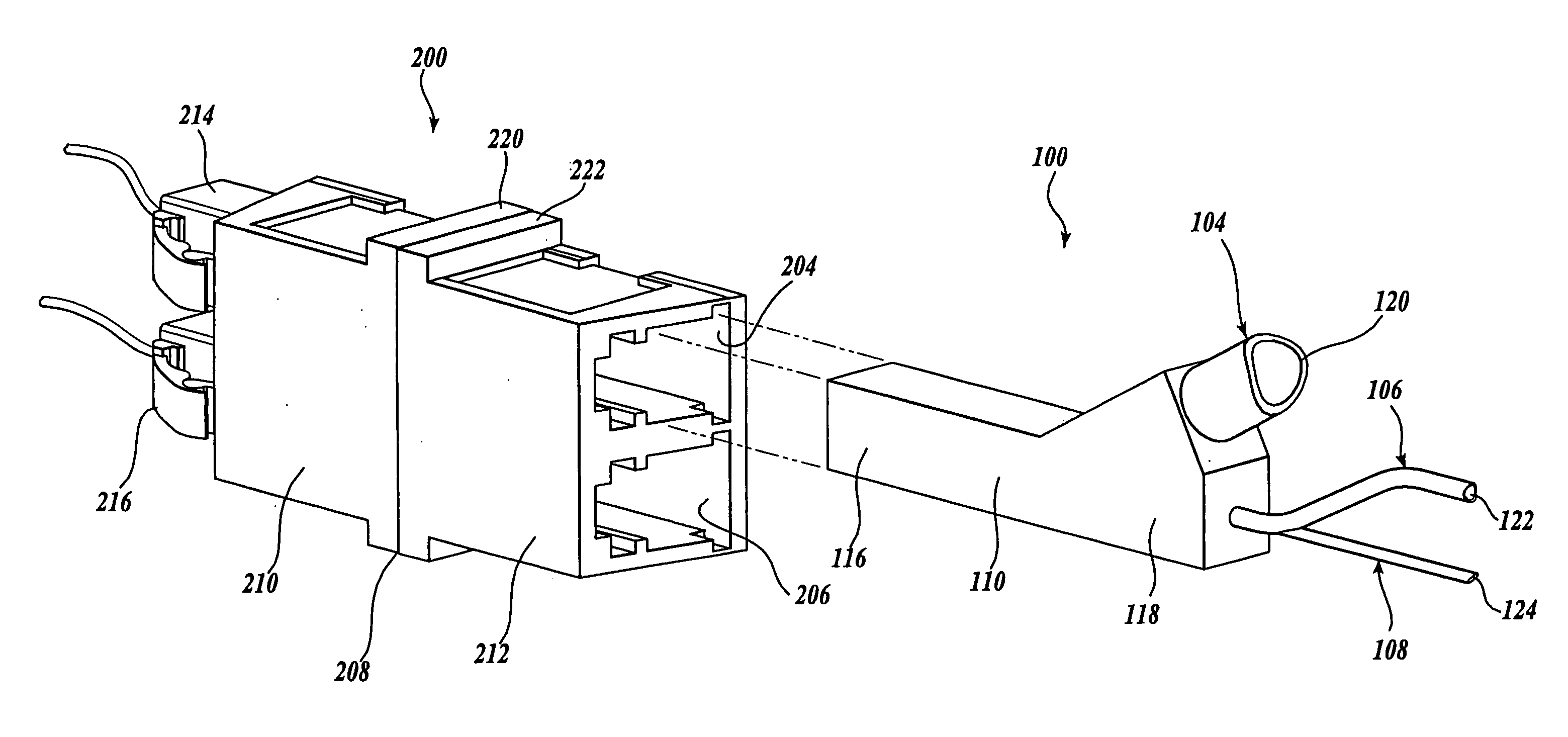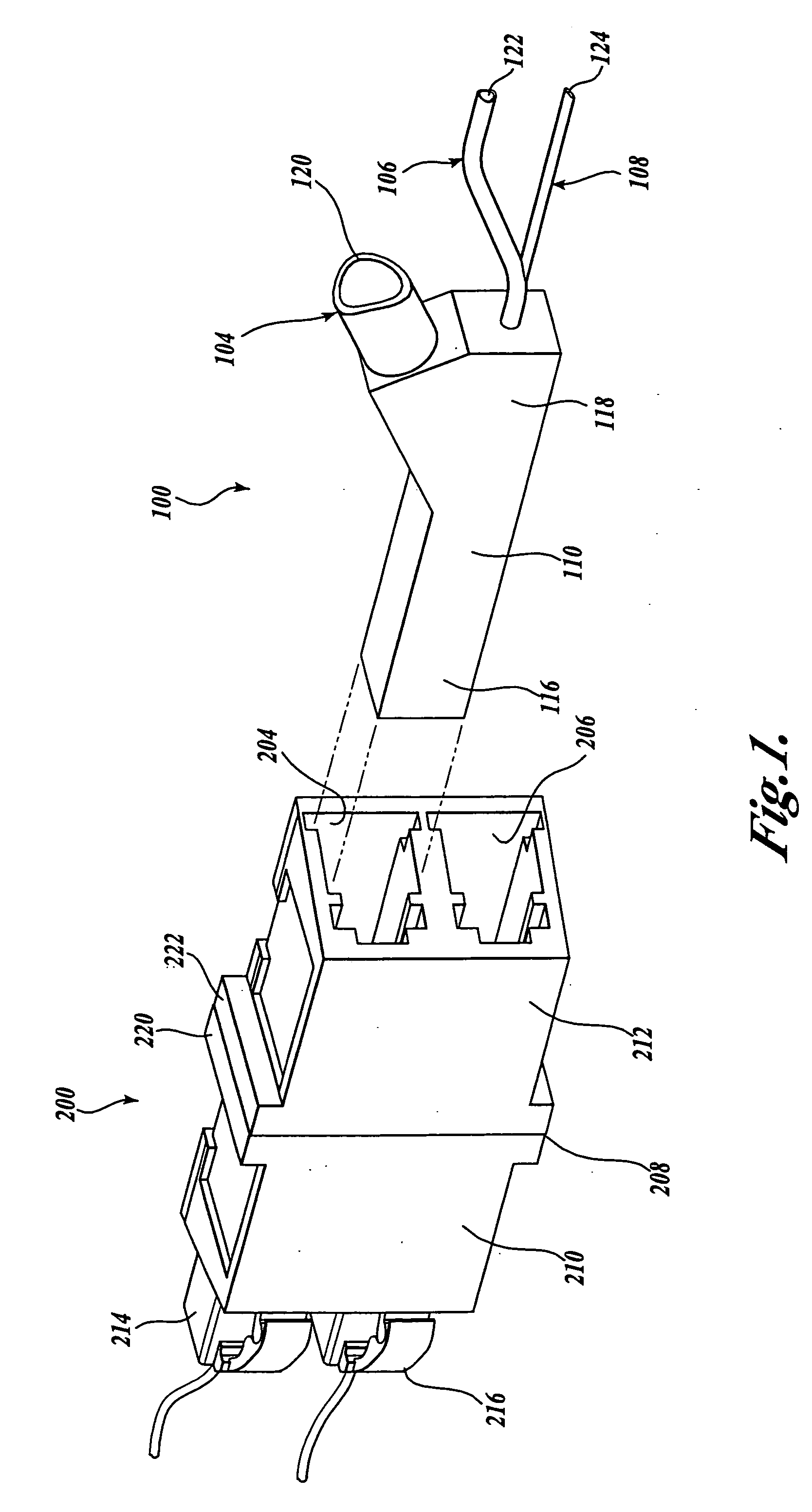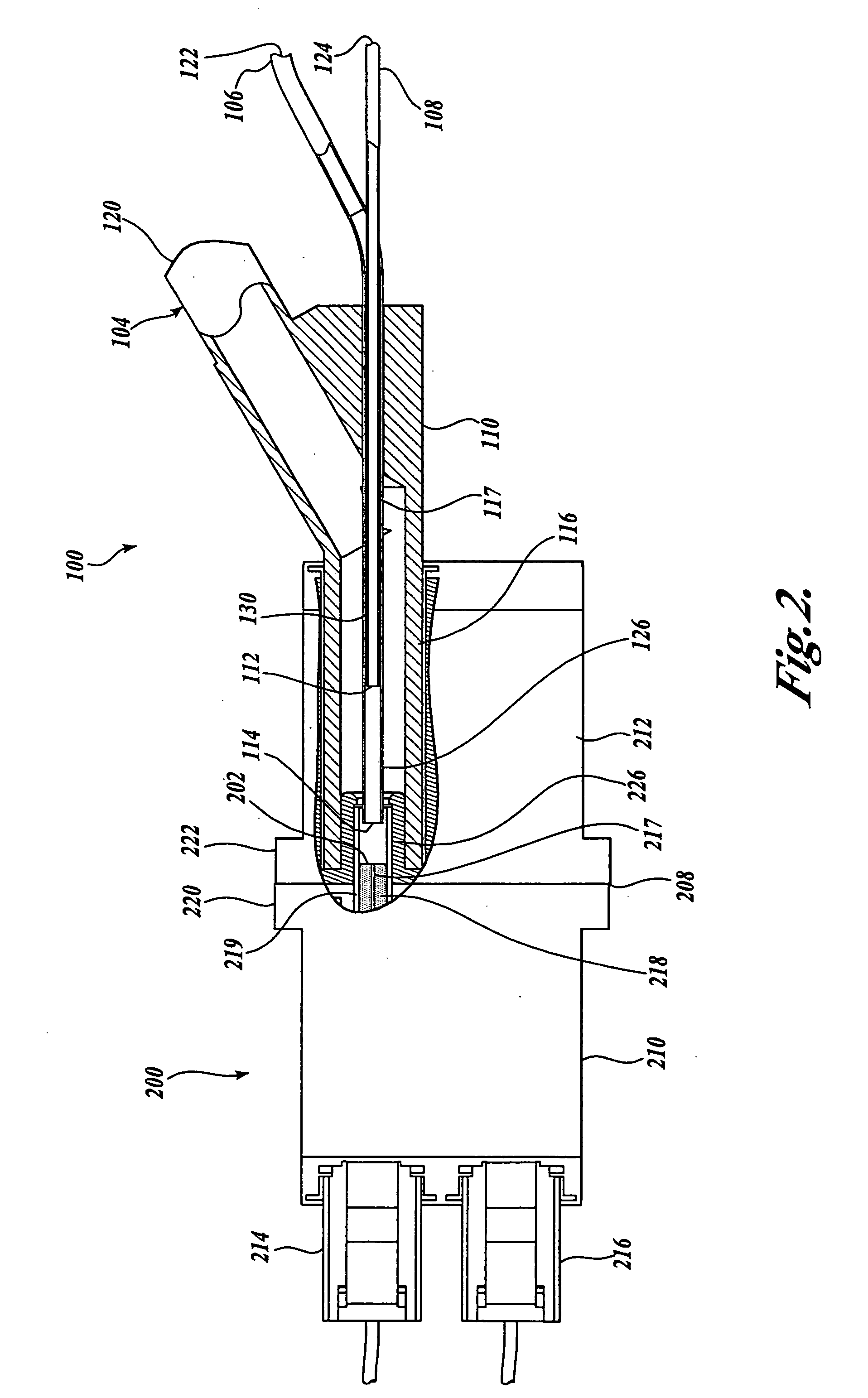Fiber-optic endface cleaning assembly and method
a fiber-optic endface and cleaning technology, applied in the direction of optical elements, cleaning using liquids, instruments, etc., can solve the problems of signal loss, degrade communication signals, and often very limited access to fiber-optic endfaces
- Summary
- Abstract
- Description
- Claims
- Application Information
AI Technical Summary
Benefits of technology
Problems solved by technology
Method used
Image
Examples
Embodiment Construction
[0030] The present invention is a fiber-optic endface cleaning assembly for cleaning the endface of an optical fiber. While not limited to the following application, the cleaning assembly of the present invention is particularly suitable for cleaning an endface of an optical fiber contained in an interface device, which is defined as any assembly, device, or apparatus having an exposed fiber-optic endface therein or supported thereby. Examples of such an interface device include any one or more, or combination of, the following: an alignment sleeve, bulkhead adapter, transceiver, transmitter, detector, or connector. A bulkhead adapter is also sometimes referred to as a “mating adapter” or a “backplane adapter”, and their design and configurations vary greatly. For illustrative purposes only, the embodiments of the present invention will be described either in relation to a fiber-optic connector contained within a bulkhead adapter, or alternately, in relation to a fiber-optic connect...
PUM
 Login to View More
Login to View More Abstract
Description
Claims
Application Information
 Login to View More
Login to View More - Generate Ideas
- Intellectual Property
- Life Sciences
- Materials
- Tech Scout
- Unparalleled Data Quality
- Higher Quality Content
- 60% Fewer Hallucinations
Browse by: Latest US Patents, China's latest patents, Technical Efficacy Thesaurus, Application Domain, Technology Topic, Popular Technical Reports.
© 2025 PatSnap. All rights reserved.Legal|Privacy policy|Modern Slavery Act Transparency Statement|Sitemap|About US| Contact US: help@patsnap.com



